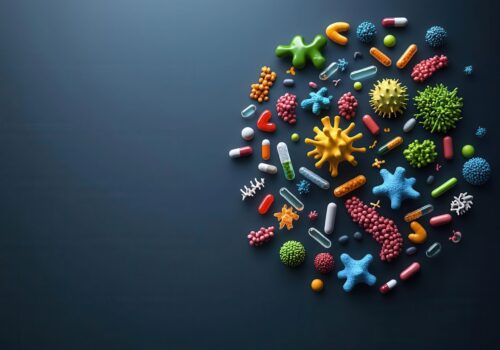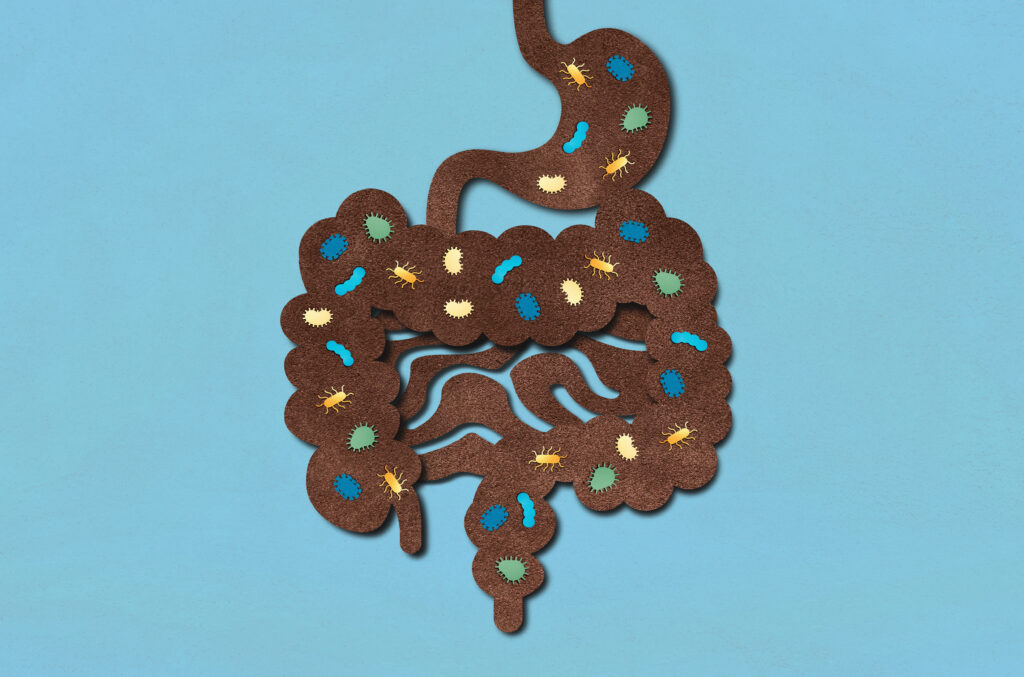The Pet Microbiome
What is a microbiome?
Every animal, from humans to our beloved dogs and cats, hosts distinct communities of microorganisms on their skin, in their noses and mouths, and throughout their gastrointestinal tract. These communities, which consist of bacteria, fungi, viruses, and archaea—along with their genetic material—are collectively known as the microbiome.
While harmful bacteria are usually the focus, the microbiome actually plays a crucial role in keeping us healthy. The microbiome is involved in many biological processes like metabolism, keeping our immune system in check, and warding off harmful bacteria. Sometimes, diseases in humans or pets are linked to disruptions to these microbial communities and their metabolic processes. Learning how to maintain a healthy composition of microbes is a priority in both human and pet microbiome research.
In regards to the gut microbiome, “metabolism” is defined as the way gut microbes break down nutrients through chemical activity to produce energy and compounds that can be used by the body.
Over thousands of years, humans and pets have evolved together with their unique microbiomes. Through environmental interactions, health conditions, and the natural aging process, these microbial communities adapt—acquiring new microbes and shedding others—to form complex ecosystems that contribute to the health of their host. Although pets and humans can harbor different microbes, their microbiomes likely function in similar ways, carrying out the same chemical reactions to do similar tasks. Both pet and human microbiomes need to help digest food and protect against many of the same types of diseases. It is important for us to learn about how these microbes function together and their impacts on both pet and human health.
While the word “microbiome” is often used to refer to bacteria, it’s defined as “the aggregate genetic material of all microorganisms living in, and on, a defined habitat.” The term “microbiota” refers to the microbes themselves (including bacteria, fungi, viruses, and archaea). To denote specific types of microbes, we use the terms “bacteriome” for bacteria, “mycobiome” for fungi, “virome” for viruses, and “archaeome” for archaea.

Why study the microbiome in pets?
Humans and their pets share a lot of similar health traits, so we can use discoveries from human microbiome research to help guide research on animal microbiomes too. Understanding our pets’ microbiomes can provide valuable insights into several areas:
Health and disease
The microbiome impacts pet health, influencing everything from digestion to immune responses. Managing pet health with food is made simpler since we can control what our pets are fed. By studying the relationship among the microbiome, disease, and diet, experts can better understand how to mitigate diseases, such as common GI issues, and develop more effective treatments, including the use of pre- and probiotics for dogs and cats.
Potential for preventive care
Pets cannot communicate when something is wrong, so identifying biomarkers of disease is vitally important. Microbial patterns are promising biomarkers of pet health and soon may be used to diagnose conditions or even predict future health concerns. This opens doors to preventive care tailored to individual pets.
Treatment efficacy
The human microbiome is known to modulate several anti-cancer and anti-inflammatory therapies, changing their effectiveness. The effectiveness of treatments can be improved with the help of nutrition and medication, which in turn play a key role in shaping the gut microbiome. More work is needed to understand how the microbiome in pets interacts with drug therapies and how we can modulate the pets microbiome to improve treatments and veterinary care.
Antibiotic use
Antibiotics often lead to GI issues because they kill beneficial bacteria alongside the harmful bacteria. We can help restore the gut microbiome with diet and other therapies such as fecal microbiome transplantation. Additionally, overuse of antibiotics has helped harmful resistant bacteria to thrive in both humans and pets. These issues could be mitigated by studying the impact of antibiotics on the gut microbiome of pets.
Pet exposure and human health
Our close physical contact with pets means we often share microbes. Exploring these exchanges and how microbes evolve in our bodies help us understand how these interactions impact the health of people and their pets.mad

The largest and most complex microbiome in the GI tract is located in the colon.
What makes the gut microbiome unique?
Among these microscopic communities, the gut microbiome stands out as one of the most diverse ecosystems, with trillions of microbial cells in the GI tracts of pets and humans. Due to its substantial biomass, the gut microbiome is the primary source of chemical activity and interacts the most with our diet and immune system. Far from being passive passengers, these microbes play roles in pet and human autoimmune diseases, affect allergy development, influence weight changes, and even alter how we respond to medications. Since gut microbiomes are like barcodes—no two are exactly alike—individuals may respond differently to the same treatments. More research is needed to understand how personalized diets and medications can work with the microbiome to better treat diseases and reduce symptoms.
